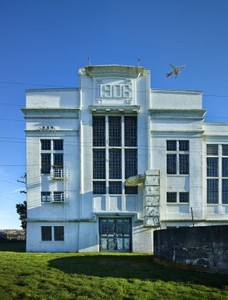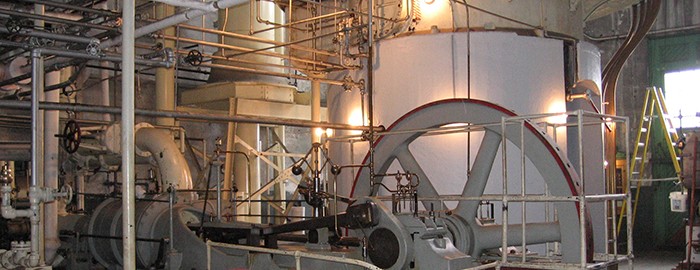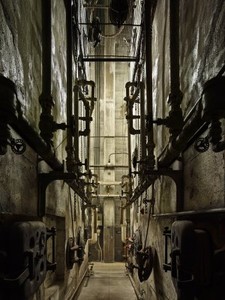Seattle Electric Company Georgetown Steam Plant
Introduction
Text-to-speech Audio
Images
The Georgetown Steam Plant (image from the Seattle Times)

Weiss air pump (image from Historic Seattle)

View between boilers (image from the Seattle Times)

Backstory and Context
Text-to-speech Audio
The History and Future of the Georgetown Steam Plant
Seattle attracted tourists and new residents alike at the turn of the twentieth century, in part by installing an electric railway system connecting the city with surrounding real estate. It also boasted electric streetlights, and as the population grew, so did business, and so did the demand for more electricity (3; 4). A Boston firm, Stone and Webster, bought out over seventeen small Seattle electric companies, uniting the system as Seattle Electric in 1899-1900 and taking exclusive control of the street railway system. The company built a steam plant at Post Street in 1902, a hydroelectric facility at Electron in 1904, and the Georgetown Steam Plant in 1906-1907 (4). Situated on the Duwamish River, industrial Georgetown offered ready access to water, Stone and Webster's electric car barns and maintenance shops, and the interurban railway line. The Georgetown Steam Plant, both a generating station and a substation, was designed by Frank B. Gilbreth, and constructed with his "fast track" process utilizing reinforced concrete instead of structural steel—one of the first buildings on the West Coast to use the material (1; 4).
Built primarily for powering the electric railway system and as a backup during "peak demand" times (6:00-10:00 am and 3:00-8:00 pm), the Georgetown Steam Plant was fully equipped to burn either coal or oil. Running entirely on oil in its first years and fed by steam-driven Blake reciprocating pumps from the Duwamish, the plant's boilers allowed for supersaturation of the steam used to power the turbo-generators for increased efficiency. It was built with expansion in mind, and in fact a second generator was installed even before the completion of the facility (4). The plant's first two generators were the General Electric vertical Curtis model, the first large-scale steam turbine which had won prizes at both the St. Louis and Lewis and Clark Expositions of 1904 and 1905, respectively (3; 4). Both generators proved problematic in their first years, burning out on several occasions and finally leading to a steam pipe explosion in which chief engineer G. W. Tucker was killed. After subsequent recommendations from the head office, the problems were apparently solved (4). Though the hydroelectric facility could produce more electricity for less money, the Georgetown Steam Plant helped pick up the slack in during the low flow of fall and winter, as well as during emergencies (3; 4).
In 1912, all of Seattle's privately-owned electric companies were consolidated as Puget Sound Traction, Power and Light, reducing the demand on the Georgetown plant to near-obsolescence until World War I (1; 4). The increased need for electricity during the war briefly brought a more important role to the steam plant, and a new, more efficient horizontal Curtis turbo-generator was installed in 1917 to double the plant's capacity and required an addition to the north corner of the building (2; 4). Other alterations during the same time period included the addition of a pump house and pipes due to the straightening of the channel of the Duwamish River, and the use of coal instead of oil to heat the boilers. In the 1930s, the smokestacks were razed for the Boeing Field runway, and in the 1940s, the plant switched back to the use of oil (4). Following the First World War, the Georgetown Steam Plant returned to its use as an emergency backup for larger hydroelectric plants, particularly during a water shortage from 1952-1953, by which time it was owned by the City of Seattle (1; 3). The plant ceased operation in June of 1977 (4).
In subsequent years, the Georgetown Steam Plant was listed
as a National Historic Landmark, a City of Seattle Landmark, and was added to
the National Register of Historic Places. It has hosted concerts, plays, and
nonprofit tours. With its nearly unaltered condition and in situ, working
machinery, City Light and the National Park Service are working to restore the
plant as a combination community hub and museum (1; 3).
